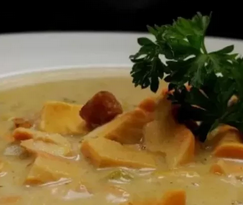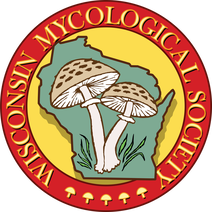Please send in any resources we may have missed! This is a work in progress.
Useful Websites & Resources:

North American Mycological Association (NAMA) website - if you are a WMS member you are able to sign up for NAMA as a "member of an affiliate club" which is at a reduced rate. The NAMA site itself is full of interesting and useful information for members and nonmembers alike.
Check out their excellent Mycophile quarterly ... Read through articles in McIlvainea: Journal of American Amateur Mycology... Collect educational resources... And find culinary inspiration from the recipes page... These are just a few highlights! |
MycoGuide by Dr. Patrick Leacock, based in Illinois - great resource full of useful information, links, and even worksheets on mycological topics. Patrick works at the Field Museum in Chigago, which has a fungarium along with its herbarium.
Tom Volk's Fungi by Dr. Tom Volk of UW La Crosse - this site is a joy, especially the extra colorful "mushroom of the month" features.
Selection of Mycology research from Wisconsin - click through to read more
Slides from Presentation on Psilocybin at WMS Fungi Fair 2022
Wisconsin Mushrooms by Andrew Khitsun - Andrew is a regular at WMS forays and takes wonderful pictures. He also teaches us to slow down and appreciate the very, very smallest fungi, including the much-less noticed "crusts" aka corticoid fungi.
Crust Fungi by Alden Dirks, currently in Michigan - speaking of the crusts... here's a whole site about them!!
Gary Lincoff's Site - lots and lots to enjoy here, from fungi science to mushroom culture
Mushroom Expert by Michael Kuo, based in Ohio - explore this site! Good way to learn keys.
Amanitaceae.org - the wonderful, colorful world of Amanitaceae family
North American Cortinarius Collections: An ongoing study - excellent resource for the family Cortinariaceae by Shannon Adams, https://nacorts.com/
The "Bolete Filter" by the Western Pennsylvania Mushroom Club - useful for sorting boletes... though there are undescribed species out there, waiting to be found out.
The "Fungal Biology Supergroup" at the University of Wisconsin Madison
Weird and Wonderful Wild Mushrooms - blog by Jan Thornhill, special mention to this post on Resupinatus dealbatus that helped WMS member Andrew Khitsun identify this great find from our Mosquito Hill Nature Center foray in 2021 (see his observation on iNaturalist and on Mushroom Observer).
Wisconsin Mushrooms - WI fungi photo and identification blog by Andrew Khitsun.
Truffle-like Fungi of North Temperate Forests - a digital guide to the truffle-like fungi of North Temperate forests.
Society for Protection of Underground Networks (SPUN) - a new nonprofit project to explore, document and champion the mycelial diversity of our planet. These networks can show themselves in the form of their fruiting bodies (mushrooms) but they can also be visibly absent and yet very, very present. Some of the most myco-diverse soil samples processed so far appear to be mountain grasslands. Who knew!?
National Weather Service rain map - precipitation tracking, good for finding out where to go for mushrooms. Also, always consider if you are allowed to be on or collect at a given spot, and if you are collecting edible species, consider if there may be sources of contamination (ex: herbicide, pesticides) that could end up in anything you forage.
Blog post on more map resources to use with foraging by Modern Forager - covers looking for 'disturbance morels' even east of the Rockies, where true burn morels aren't found.
How to Identify Mushrooms to Genus III - Microscopic Features
Ascomycete.org - reference site for Ascomycetes
Tom Volk's Fungi by Dr. Tom Volk of UW La Crosse - this site is a joy, especially the extra colorful "mushroom of the month" features.
Selection of Mycology research from Wisconsin - click through to read more
Slides from Presentation on Psilocybin at WMS Fungi Fair 2022
Wisconsin Mushrooms by Andrew Khitsun - Andrew is a regular at WMS forays and takes wonderful pictures. He also teaches us to slow down and appreciate the very, very smallest fungi, including the much-less noticed "crusts" aka corticoid fungi.
Crust Fungi by Alden Dirks, currently in Michigan - speaking of the crusts... here's a whole site about them!!
Gary Lincoff's Site - lots and lots to enjoy here, from fungi science to mushroom culture
Mushroom Expert by Michael Kuo, based in Ohio - explore this site! Good way to learn keys.
Amanitaceae.org - the wonderful, colorful world of Amanitaceae family
North American Cortinarius Collections: An ongoing study - excellent resource for the family Cortinariaceae by Shannon Adams, https://nacorts.com/
The "Bolete Filter" by the Western Pennsylvania Mushroom Club - useful for sorting boletes... though there are undescribed species out there, waiting to be found out.
The "Fungal Biology Supergroup" at the University of Wisconsin Madison
Weird and Wonderful Wild Mushrooms - blog by Jan Thornhill, special mention to this post on Resupinatus dealbatus that helped WMS member Andrew Khitsun identify this great find from our Mosquito Hill Nature Center foray in 2021 (see his observation on iNaturalist and on Mushroom Observer).
Wisconsin Mushrooms - WI fungi photo and identification blog by Andrew Khitsun.
Truffle-like Fungi of North Temperate Forests - a digital guide to the truffle-like fungi of North Temperate forests.
Society for Protection of Underground Networks (SPUN) - a new nonprofit project to explore, document and champion the mycelial diversity of our planet. These networks can show themselves in the form of their fruiting bodies (mushrooms) but they can also be visibly absent and yet very, very present. Some of the most myco-diverse soil samples processed so far appear to be mountain grasslands. Who knew!?
National Weather Service rain map - precipitation tracking, good for finding out where to go for mushrooms. Also, always consider if you are allowed to be on or collect at a given spot, and if you are collecting edible species, consider if there may be sources of contamination (ex: herbicide, pesticides) that could end up in anything you forage.
Blog post on more map resources to use with foraging by Modern Forager - covers looking for 'disturbance morels' even east of the Rockies, where true burn morels aren't found.
How to Identify Mushrooms to Genus III - Microscopic Features
Ascomycete.org - reference site for Ascomycetes




